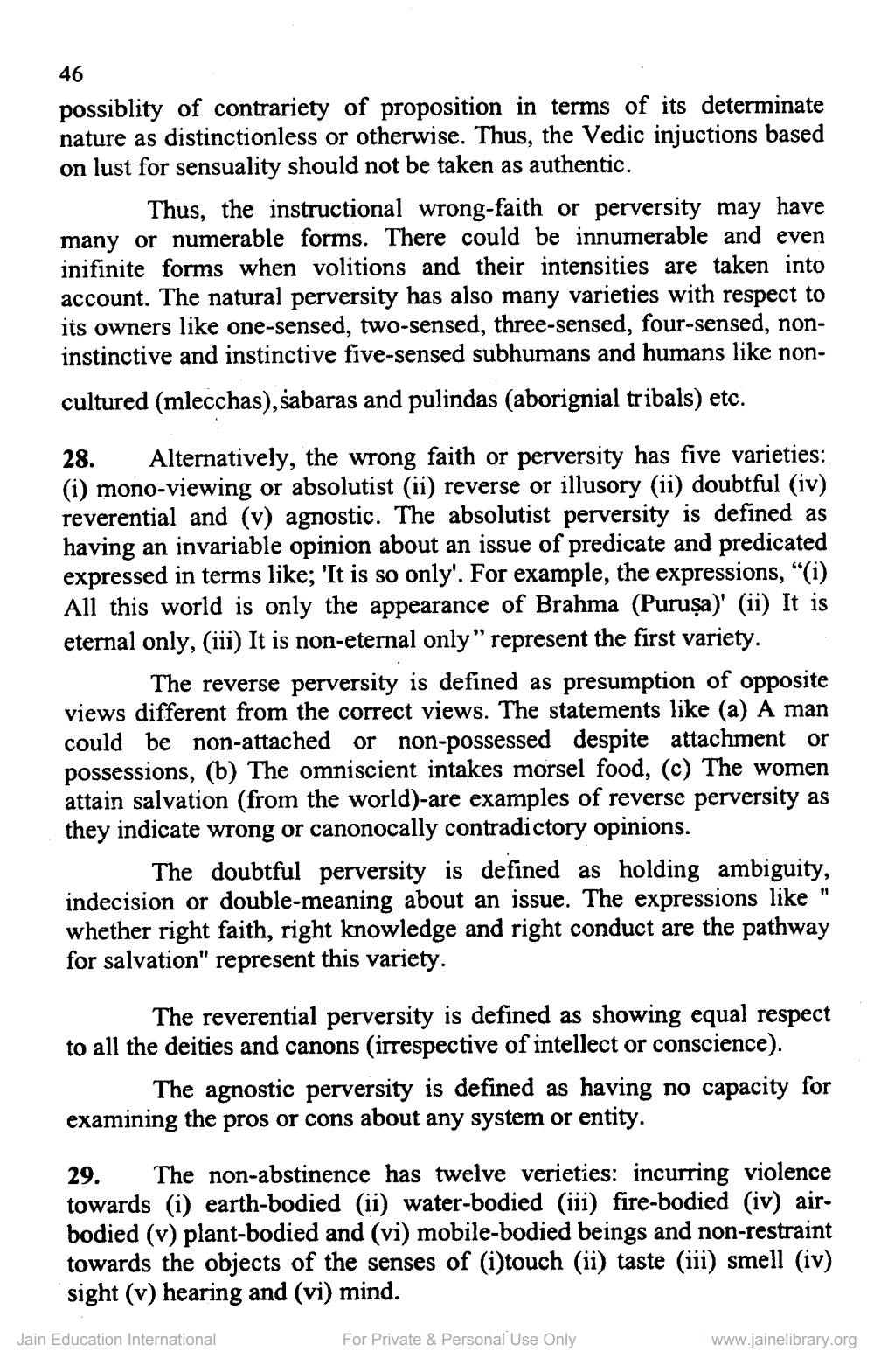________________
46
possiblity of contrariety of proposition in terms of its determinate nature as distinctionless or otherwise. Thus, the Vedic injuctions based on lust for sensuality should not be taken as authentic.
Thus, the instructional wrong-faith or perversity may have many or numerable forms. There could be innumerable and even inifinite forms when volitions and their intensities are taken into account. The natural perversity has also many varieties with respect to its owners like one-sensed, two-sensed, three-sensed, four-sensed, noninstinctive and instinctive five-sensed subhumans and humans like non
cultured (mlecchas), sabaras and pulindas (aborignial tribals) etc.
28.
Alternatively, the wrong faith or perversity has five varieties: (i) mono-viewing or absolutist (ii) reverse or illusory (ii) doubtful (iv) reverential and (v) agnostic. The absolutist perversity is defined as having an invariable opinion about an issue of predicate and predicated expressed in terms like; 'It is so only'. For example, the expressions, "(i) All this world is only the appearance of Brahma (Puruşa)' (ii) It is eternal only, (iii) It is non-eternal only" represent the first variety.
The reverse perversity is defined as presumption of opposite views different from the correct views. The statements like (a) A man could be non-attached or non-possessed despite attachment or possessions, (b) The omniscient intakes morsel food, (c) The women attain salvation (from the world)-are examples of reverse perversity as they indicate wrong or canonocally contradictory opinions.
The doubtful perversity is defined as holding ambiguity, indecision or double-meaning about an issue. The expressions like " whether right faith, right knowledge and right conduct are the pathway for salvation" represent this variety.
The reverential perversity is defined as showing equal respect to all the deities and canons (irrespective of intellect or conscience).
The agnostic perversity is defined as having no capacity for examining the pros or cons about any system or entity.
29.
The non-abstinence has twelve verieties: incurring violence towards (i) earth-bodied (ii) water-bodied (iii) fire-bodied (iv) airbodied (v) plant-bodied and (vi) mobile-bodied beings and non-restraint towards the objects of the senses of (i)touch (ii) taste (iii) smell (iv) sight (v) hearing and (vi) mind.
For Private & Personal Use Only
Jain Education International
www.jainelibrary.org




